A 16-Entry Gauntlet of Glorious Villainy, Moral Freefall, and Deliciously Dark Power Trips
If games are empathy machines, they’re also superb laboratories for mischief—and sometimes outright malice. This list celebrates titles that make being bad not just possible, but mechanically rich, narratively reactive, and, yes, ridiculously fun. We’ve focused on popular, acclaimed releases (leaning modern where it counts) and ordered them so the most devious delights are waiting at the end. Sharpen your horns, rehearse your evil laugh, and prepare for consequence-laden choices, gleeful mayhem, and sandboxes that reward villainous creativity.
16) Destroy All Humans! (2020)
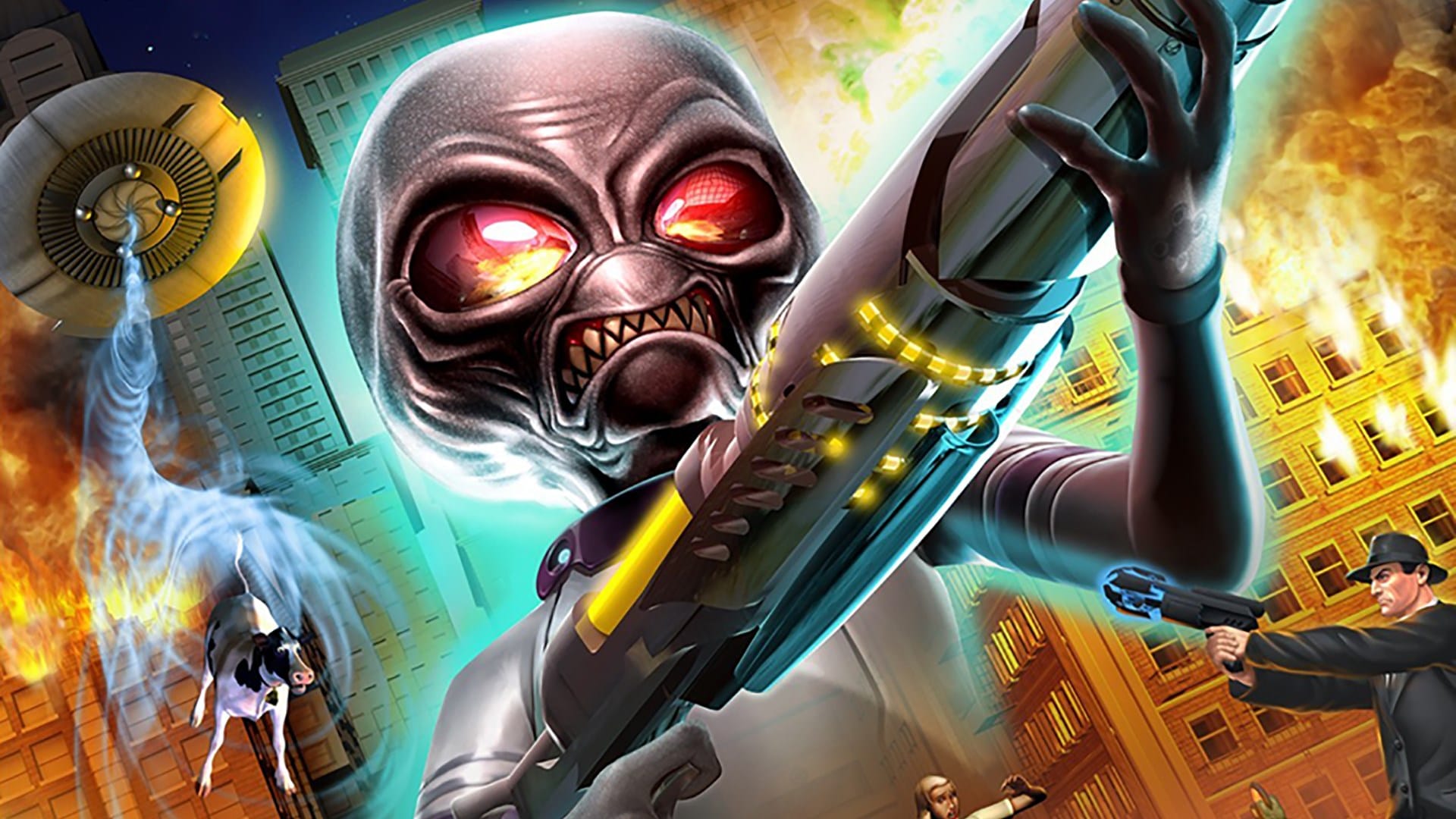
The 2005 cult classic returns with a lavish 2020 remake that captures its B‑movie satire and gleeful alien anarchy. You’re Crypto‑137, a snarky invader tasked with harvesting human DNA, disintegrating hapless citizens, and joyriding a UFO over 1950s America. Updated controls, recreated missions (plus a once‑cut Area 42 chapter), and modern visuals keep the mischief snappy as you probe, levitate, and harvest minds across open hubs. It’s not the deepest sandbox, but as a fast, funny power trip it’s still irresistible—especially when you’re micromanaging chaos from above, then dropping in to zap, disguise, and sow panic at street level. If you want your villainy broad, cartoonish, and crowd‑pleasing, Crypto’s gleefully mean streak remains a great starting point—and the remake’s improvements make the bite‑sized havoc loop sing on contemporary hardware. Beam up the cows, beam down the terror, and remember: the 1950s were made to be lampooned…and vaporized.
15) Carrion (2020)
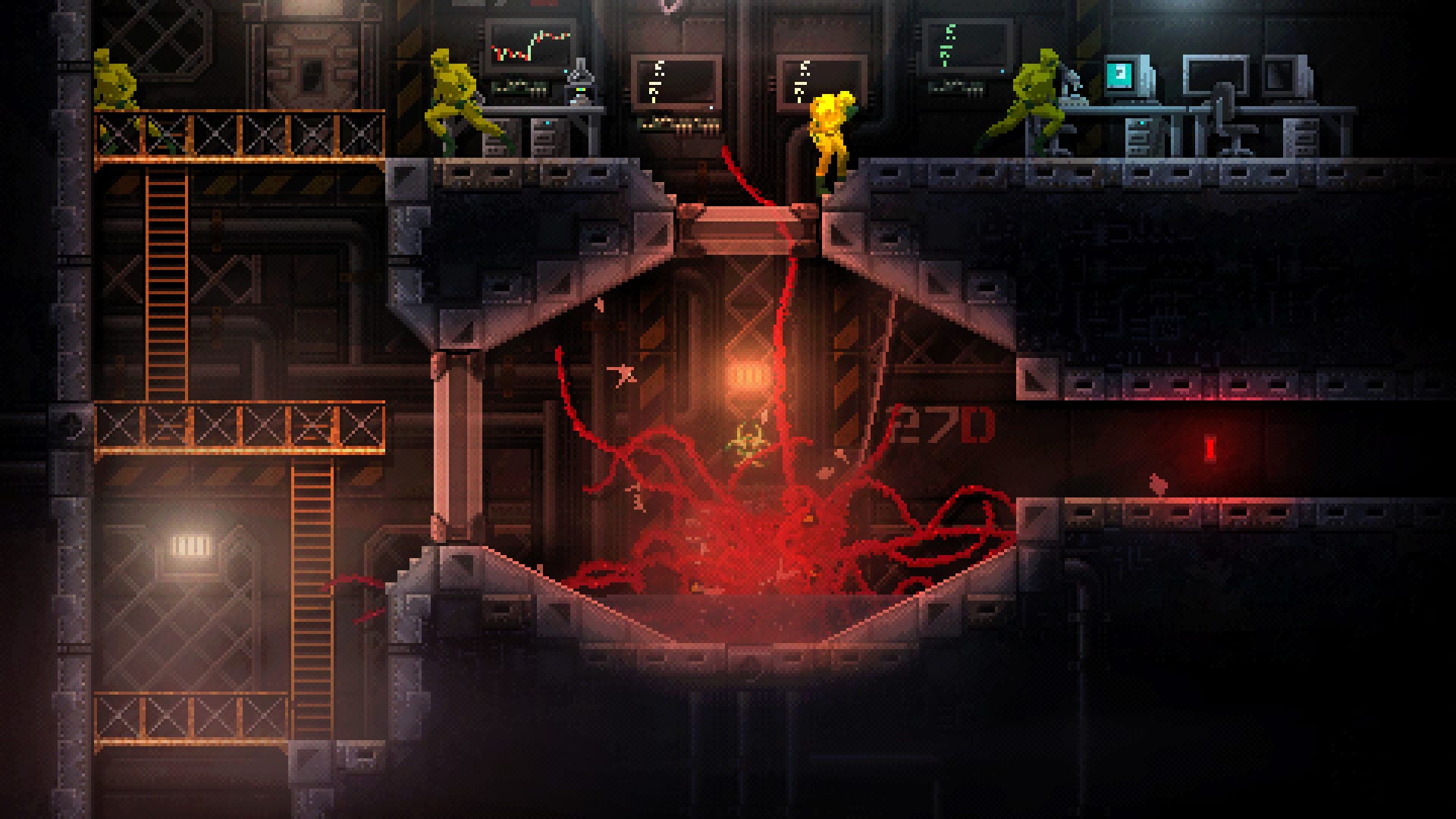
Carrion flips horror convention so you aren’t fleeing the monster—you are the monster. Your red, sinewy mass slithers through vents and labs, snatching scientists into vents, ripping doors, and evolving new abilities. The controls sell the fantasy: movement is liquid and predatory, tentacles snapping to switches, bodies, and destructible walls. Where many “evil routes” are about dialogue prompts, Carrion’s villainy is physical, tactile, and constant. You’ll stalk, bait, and outwit security as you grow from a fragile blob into a sprawling apex predator. It’s a tight, creative “reverse horror” sprint that luxuriates in being awful without moral nagging—just pure design confidence and an impeccable monster vibe. If you’ve ever watched a lab experiment escape in a movie and thought “let me be that,” Carrion is the dream made writhing, roaring reality.
14) Evil Genius 2: World Domination (2021)

Few games let you twirl your metaphorical mustache with more style. Evil Genius 2 is a glossy, campy lair‑builder where you hire minions, booby‑trap corridors, and fund doomsday schemes against meddling do‑gooders. The pleasure here isn’t just the base layout puzzles or the rhythm of global operations—it’s the tone: a lovingly silly spy‑fi send‑up where “phase one: steal the world” somehow sounds reasonable after your third gold‑vault expansion. The sequel modernizes the 2004 original with more systems (multiple geniuses, henchmen, and world‑level heat management) and quality‑of‑life finesse. Missions pull your attention between lair defense and the world map’s sting‑and‑counter‑sting cadence, while spectacular traps make every infiltrator’s last step your punchline. If your inner Dr. Evil wants a proper project plan—and a shark tank—this is the base management fantasy to beat.
13) Total War: Warhammer III (2022)

Where many strategy games discourage cruelty, Warhammer III hands you the keys to the Realm of Chaos. March for Khorne, Nurgle, Slaanesh, or Tzeentch—each Chaos God plays differently, from blood‑mad rushdowns to scheming sorcery and decadent manipulation. The campaign spans turn‑based grand strategy and real‑time carnage, and the sprawling “Immortal Empires” mode lets you fuse content across the trilogy for a gigantic, multi‑faction war toybox. As a Chaos faction, you’ll spread corruption, break mortals, and worship ruin—mechanically and thematically. It’s villainy with logistics, where dark glory trees, corruption spread, and unit rosters all serve the same unholy agenda: win, but make it vile. Post‑launch patches and DLC keep the battlefield writhing with new terrors. If your idea of being bad includes razing provinces and gifting skulls to dark gods, welcome home.
12) Stellaris (2016) — Developer: Paradox Development Studio

No galactic sandbox lets you define evil quite like Stellaris. Custom empires can embrace genocidal civics—Fanatic Purifier, Determined Exterminator, Devouring Swarm—each reshaping diplomacy into war and ethics into annihilation. That choice reverberates across exploration, colonization, and warfare as you cleanse the stars and retool your economy for endless conflict. Since launch, expansions and free updates have matured the galaxy into a flexible laboratory for ideology: uplift primitives…or harvest them; adopt authoritarianism, slavery, and purges, or role‑play a xenophobe culture fixated on “purity.” Stellaris rarely judges—it just simulates—so the sting of villainy is earned through emergent stories, fallen empires’ wrath, and your neighbors’ terror. Want to write a sci‑fi tragedy where you’re the monster? Design it, role‑play it, then watch the galaxy recoil—and sometimes, horrifyingly, adapt.
11) Frostpunk (2018)
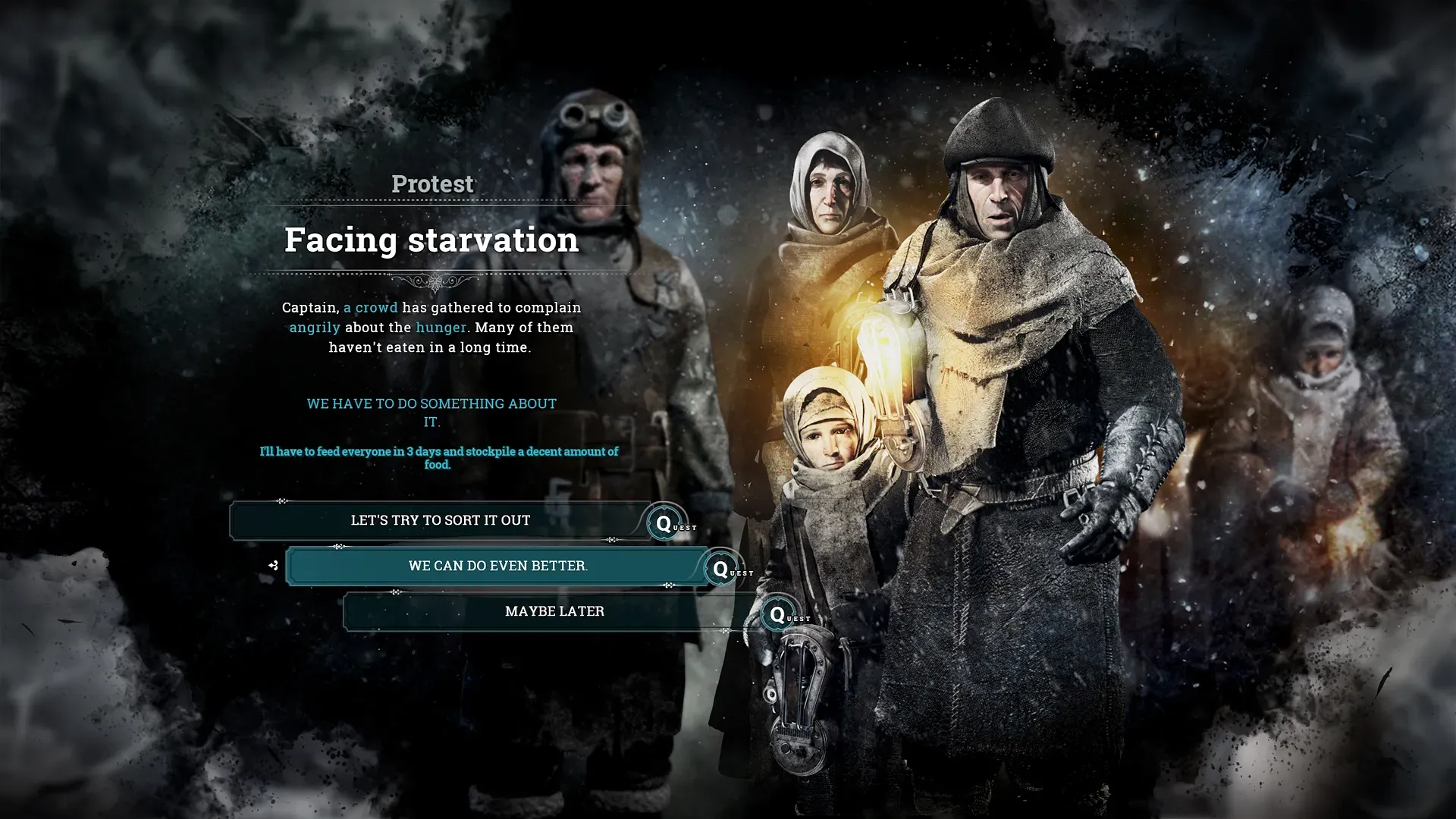
Frostpunk makes evil feel administrative. As leader of Earth’s last city in a lethal freeze, you issue laws—child labor, emergency shifts, public punishments—that trade lives and hope for output. The genius is how it pushes you: do you sign Order’s propaganda and prisons to hold civilization together with fear, or lean into Faith’s harsher certainties? It’s not cackling villainy; it’s cold calculus, and the UI becomes an accomplice as you watch hope dip and discontent spike. Every decree echoes in the streets, and the city remembers. Frostpunk’s moral chill comes from systems that need your cruelty to function at peak efficiency. When your generator hums and the frostbite slows, you feel the weight of what you authorized. It’s a masterclass in making authoritarian temptation understandable—and therefore terrifying.
10) Dead by Daylight (2016)

Being evil is the entire pitch: one player hunts four others across fog‑shrouded arenas, sacrificing them to The Entity. As the Killer, you embody slasher‑movie menace, each character boasting distinct powers—bear traps, chainsaws, invisibility, teleportation, and licensed icons galore. The design makes villainy kinetic: stalking line‑of‑sight, cutting loops, baiting pallets, and leveraging perks to snowball panic. Even better, it’s a live game that constantly adds new Killers from across horror (and anime), so your toolbox of fright keeps expanding. When matches click, you feel like the director of a grisly micro‑thriller—setting tempo, forcing mistakes, and savoring the last‑second denial at the exit gates. If asymmetric hunters thrill you, DBD is a bottomless pit of power trips and screams.
9) V Rising (2024)

The vampire fantasy, fully realized: wake at dusk, hunt by blood smell, enthrall prey, and build a gothic castle to dominate the countryside. Emerging from Early Access in 2024, V Rising nails the loop—feed to survive and empower your build, stalk bosses for abilities, and craft vampiric opulence from stolen human toil. Blood types matter; the “quality” of victims determines potent buffs, so cruelty becomes optimization. PvE and PvP shards both shine—raids, rival barons, and political brutality flourish on player servers. It’s Diablo‑meets‑survival with a villain’s heart, and the 1.0 release plus chunky updates cemented it as a modern favorite for nocturnal tyrants. If you want your evil draped in velvet with systems depth to match the aesthetic, this is the castle you’ll never stop renovating.
8) Cult of the Lamb (2022)

An adorable lamb starts a death cult—because a god‑thing said so. This roguelite/base‑builder mash‑up juxtaposes cutesy woodland worshippers with indoctrination, sacrifice, and increasingly unhinged sermons. Between snappy dungeon runs, you manage faith, hunger, sleeping quarters, and doctrine trees that unlock rituals (weddings…or cannibal feasts). The evil here is tongue‑in‑cheek, but the systems bite: neglect devotion and followers dissent; push “dark” doctrines and efficiency skyrockets. It captures the sinister charisma of cult leadership with irresistible feedback loops: preach, bless, exploit, repeat. Combine tight action with a management sim that rewards moral corruption, and you get one of the decade’s most charismatic villain role‑plays—equal parts plush toy and profane text.
7) Tyranny (2016)

“Sometimes, evil wins.” Tyranny starts after the Overlord has conquered the world—and you’re their traveling judge, jury, and enforcer. Your choices interpret, weaponize, or subvert Kyros’ draconian laws, reshaping regions and relationships with faction‑splitting consequences. Obsidian’s CRPG design ensures your cruelty (or mercy) isn’t hand‑waved: edicts can ravage cities, companions remember your precedents, and the game’s reactive narrative lets you be tyrant, reformer, or ambitious usurper. It’s bracing to watch dialogue, magic, and even dungeon access bend around the kind of ruler you become. Few RPGs center authoritarian mechanics as elegantly, and fewer still relish your power to codify oppression. As villain fantasies go, this is cerebral, chilling, and superbly written.
6) Undertale (2015)

Undertale’s infamous Genocide Route weaponizes you. Refuse mercy, hunt every monster in each area, and the game changes—NPCs grow fearful, music curdles, encounters and bosses reconfigure to punish your cruelty. The combat shifts from playful bullet‑hell puzzles to grueling duels that comment on your choices in and out of character. Undertale doesn’t reward evil so much as interrogate it through design, but it remains one of gaming’s sharpest “what if I do the worst thing?” experiments. Seeing the Underground empty out because of your actions reframes every joke and tune you loved on a pacifist run. It’s not a power trip—it’s a mirror. And if you finish? Your save file may never look at you the same way again.
5) Dishonored 2 (2016)
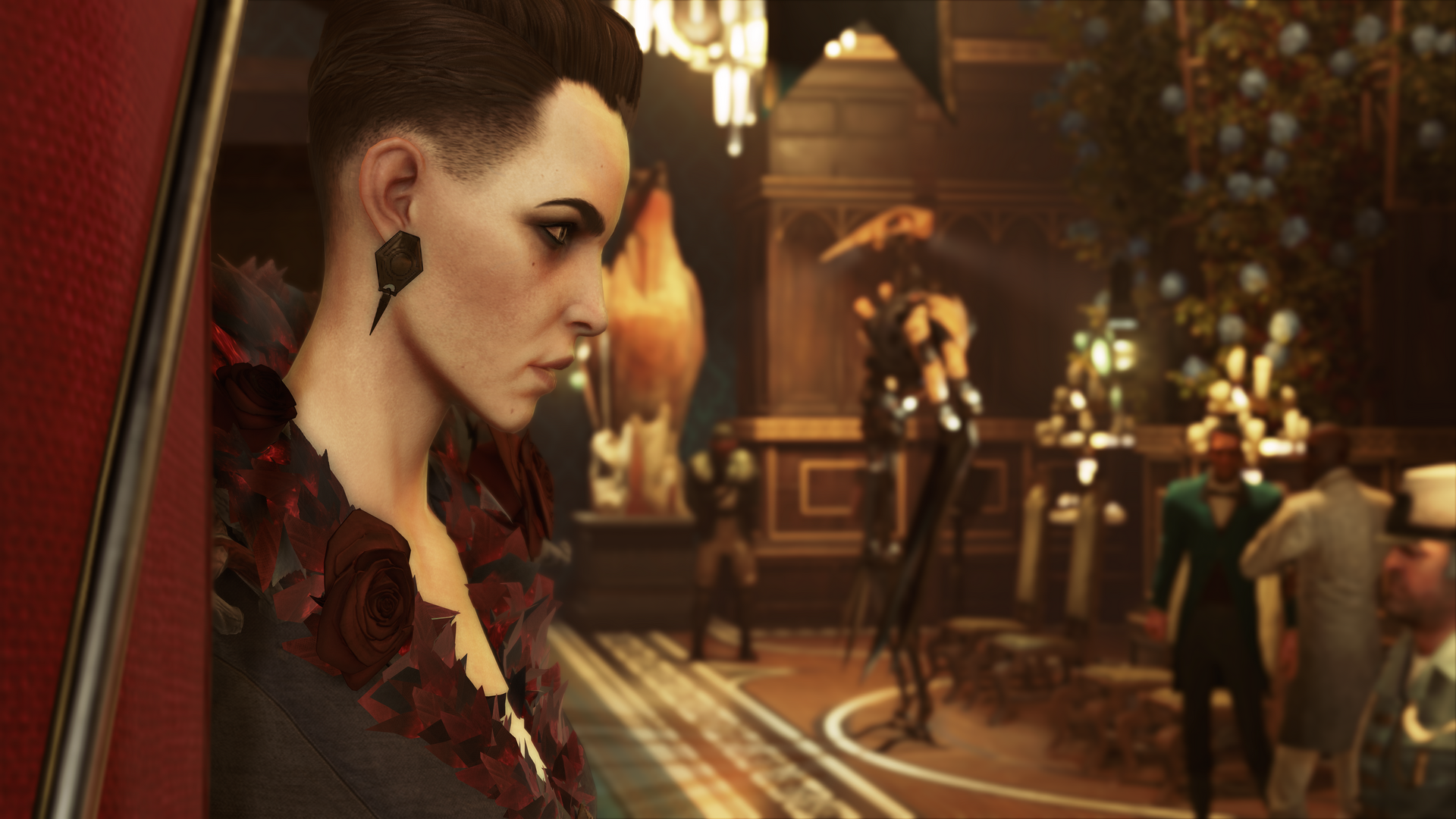
Dishonored 2 is a stealth playground where the “high chaos” route turns Dunwall and Karnaca into plague‑ridden nightmares that reflect your violence. Whether you play as deposed Empress Emily or bodyguard Corvo, the toolkit for wickedness is intoxicating: Domino enemies together, summon bloodfly swarms, freeze time for creative executions, and weaponize the environment. The brilliance isn’t only power—it’s systems poetry. Your wicked runs alter patrols, boost enemy density, and steer story beats and ending slides toward ruin. Arkane trusts you to find stylish carnage or surgical terror, and the game responds with reactivity many “moral choice” systems only gesture at. If “evil but elegant” is your ideal, few sandboxes reward creative cruelty like this one.
4) Pathfinder: Wrath of the Righteous (2021)
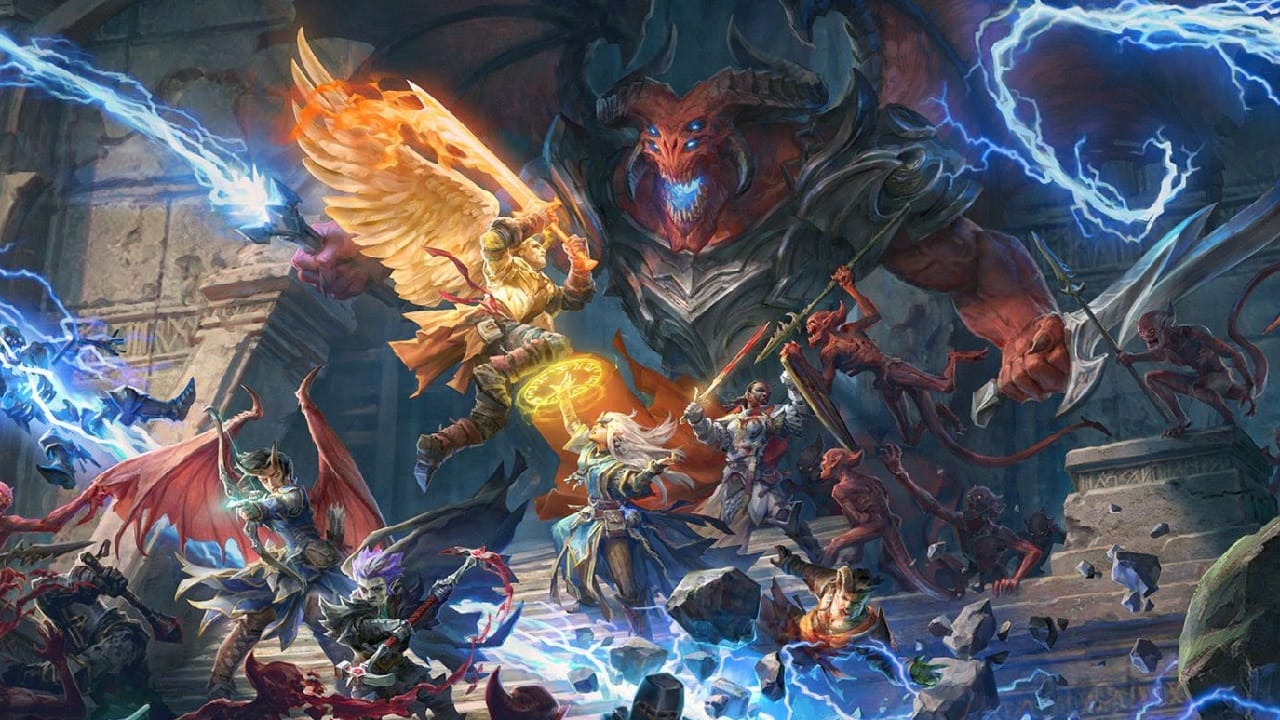
Owlcat’s CRPG lets you pick a Mythic Path that rewires the campaign—and if you want villainy, Demon and Lich are deliciously corrupting. As a Demon, you embrace rage and domination; as a Lich, you become an immortal necromancer who can replace party members with undead thralls. Those choices spill into custom mechanics, spells, dialogue, allies, and even your capital’s vibe. Wrath’s scope is outrageous, and its willingness to meaningfully reward a dark path makes it a standout among choice‑driven RPGs. Whether you’re terrorizing crusaders or raising an unholy empire, the game gives your depravity bespoke toys, encounters, and endings. This is “evil route” design at full tilt—consequential, flavorful, and powerful enough to feel like a different RPG.
3) Crusader Kings III (2020)
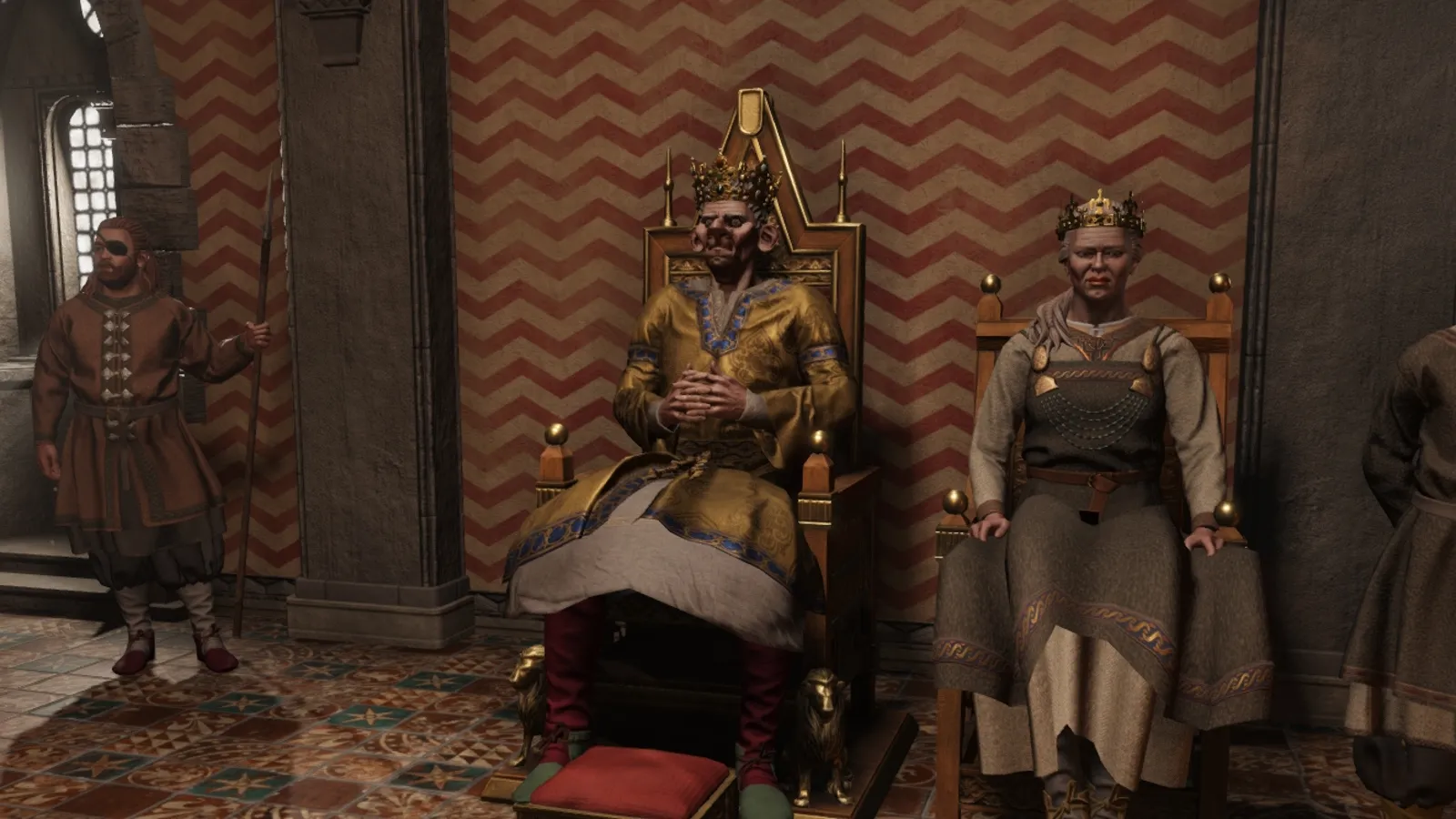
CK3 turns medieval intrigue into a dynastic soap opera where you write the scandals. Want to be feared? Stack the Torturer lifestyle, generate Dread through torture and executions, manipulate secrets, and watch vassals cower. The systems for imprisonment, blackmail, and public cruelty are shockingly robust—and the map reacts. Tyranny hurts…but terror works. Because the simulation’s goal isn’t moral judgment but emergent narrative, your monstrous choices bloom into stories your heir will inherit and twist anew. One generation’s sadist can found a line of infamous rulers; another can pay for grandpa’s sins. It’s equal parts strategy, role‑play, and wicked improv, and few games capture the administrative nuts‑and‑bolts of villainy so well.
2) Grand Theft Auto V (2013)

Still the poster child for mainstream, free‑form villainy, GTA V hands you a sun‑baked metropolis to terrorize at your pace. The triple‑protagonist structure lets you sample flavors of bad—Michael’s jaded criminal chic, Franklin’s hungry striver pragmatism, Trevor’s feral chaos—and the systems invite sandbox spectacle. Heists, shootouts, reckless physics, and the ever‑present “wanted” escalation make being awful a loop unto itself, and Los Santos is a city built to withstand (and reward) your worst impulses. Layer on GTA Online’s near‑endless content and you’ve got an evergreen engine for elaborate crimes with friends. Yes, it’s older—but popularity, polish, and scope keep GTA V the genre’s baseline: when people think “play the villain,” they still picture Los Santos in their rear‑view mirror and a five‑star wanted level blinking at the top right.
1) Baldur’s Gate 3 (2023)
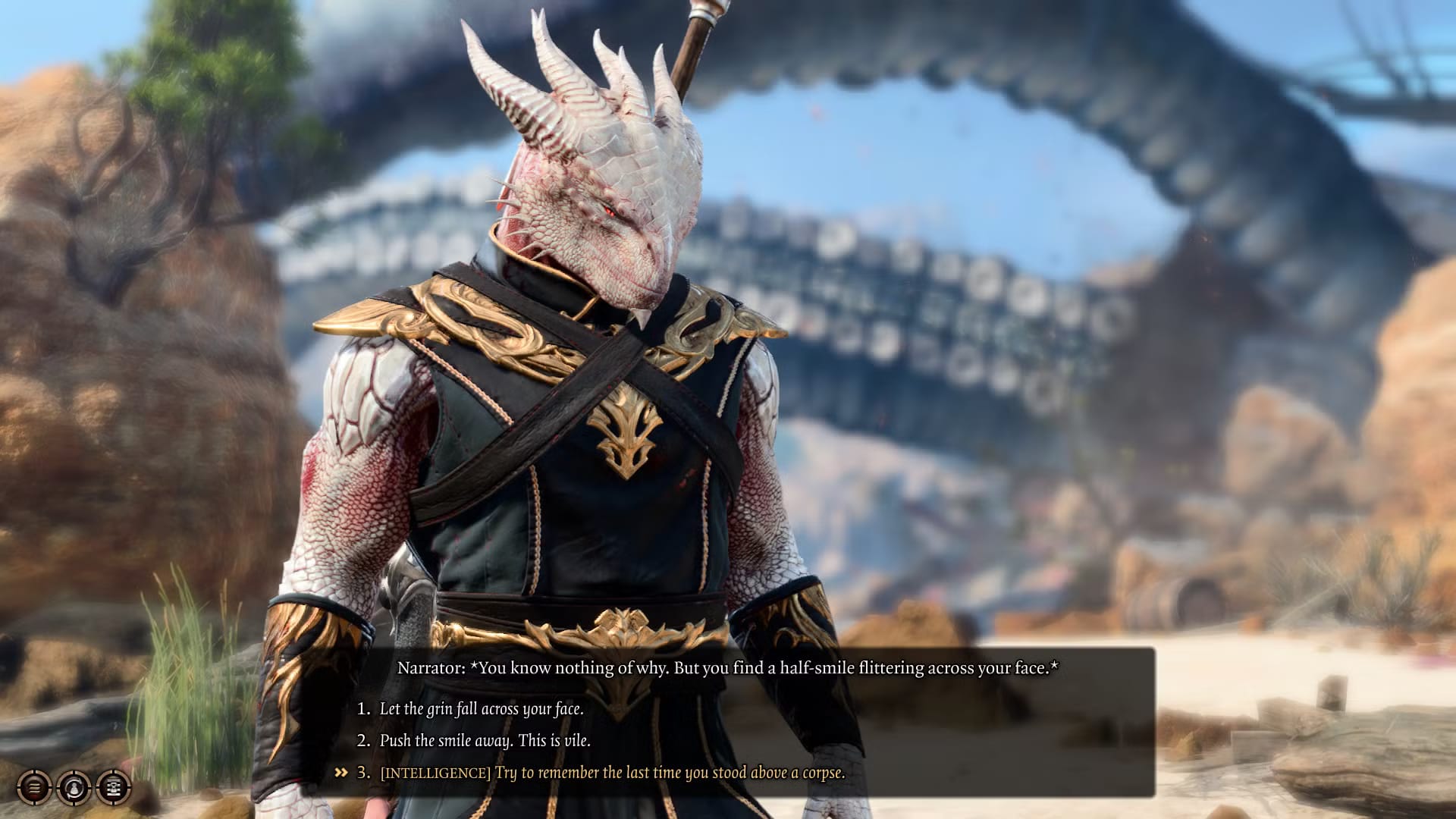
BG3 perfects the “evil playthrough” by making it deeply authored. The Dark Urge origin isn’t just “be mean”; it’s a fully integrated storyline about compulsion, memory, and the God of Murder, with bespoke scenes, companions’ reactions, and routes that feel dramatically distinct. Choices ripple through acts, companions can abandon—or die by—your hand, and late‑game content now includes additional evil endings that legitimize dark trajectories. Systems‑wise, BG3 empowers your malice with turn‑based combat options, arcane shenanigans, and social manipulation, all while staging unforgettable setpieces for depravity or redemption. It’s rare to find an RPG that supports darkness with such craft and consequence. If you want a campaign that looks you in the eye while you go full villain—and then writes you the operatic finale you deserve—this is the gold standard.
Also‑Great Evil Playgrounds (Honorable Mentions You Might Love)
- Overlord (2007) — Command goblins, kick chickens, be delightfully petty.
- Vampyr (2018) — A doctor…who might drain his patients dry.
- Stellaris (Console, 2019) — Yes, you can purge the galaxy from your couch.
(Focused list capped at 16; these are extra morsels if you’re ravenous.)
Now go forth and be terrible—responsibly, in single‑player or consensual multiplayer spaces.





